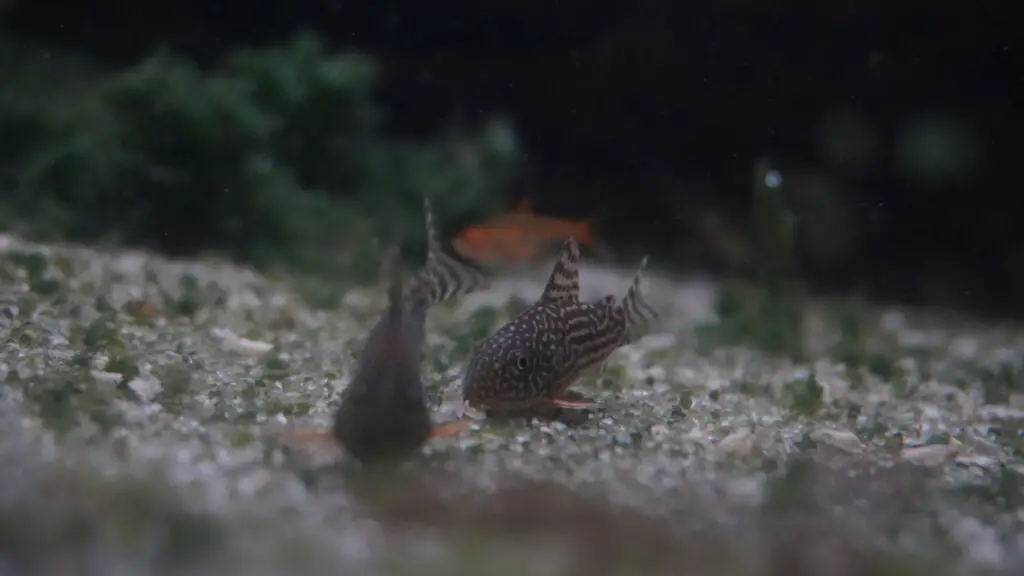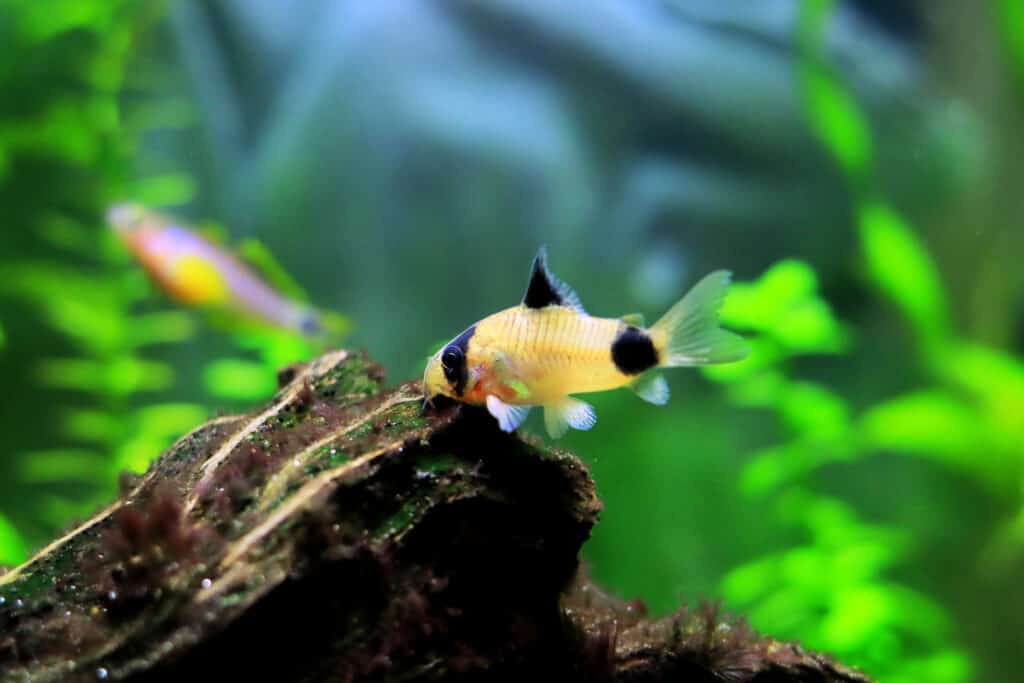
Corydoras, often referred to as Cory Cats, are among the favorite freshwater fish for aquarium hobbyists.
Originating from the peaceful streams of South America, these small and sociable creatures can be a great addition to any tank.
However, when considering this incredible species it is important to understand what makes the best setup for them to thrive.
The ideal setup for Corydoras is a tank of 20 gallons or more, preferably with dimensions that provide increased length rather than height, and a sandy substrate.
Let’s explore the essential components of an ideal environment for corydoras and the reasons why they are important.
Establishing the Best Tank
Corydoras are bottom dwellers, meaning they spend the majority of their time at the bottom of an aquarium.
For this reason, a tank that has more length than height should be considered because it provides more bottom surface area giving them more room to swim and scavenge for food.
The size of the tank becomes a factor because Corydoras are a shoaling fish that enjoys being in groups of six or more, because of this a tank size of 20 gallons should be considered the minimum size for an ideal setup, however larger is always better.
Looking at a Corydoras Natural Habitat
Corydoras in the wild are predominantly found in soft, acidic waters, with varying substrates that include sharp rocky, sandy, or muddy bottoms. In all cases, they are found near the bottom where they forage for their food.
Though not required to replicate their natural habitat, understanding some of the elements that they have involved can help give ideas of possible options, and can be a good jumping-off point.
Remember to also consider the location in which your specific corydoras have been bred and lived, since nowadays, many fish are captive bred, meaning the wild habitats might not be ideal.
Choosing a Substrate For Your Corydoras?
Sand can be an excellent choice of substrate for corydoras.
It reduces some risks of accidental cuts and provides an opportunity to view the interesting way corydoras eat.
Taking up clumps of sand and shifting it through its mouth pulling in the food and pushing the sand out to their side.
However sand is not the only option to choose from.
There is also gravel to be considered, and there is still somewhat of a debate over if it should be used. It is often questioned, whether are corydoras a fish where only sandy substrates can be used to make an optimal environment, or is gravel suitable.
If looking back at their natural habitats, many of their substrates are full of rocky, and sharp bottom.
This means that they are adaptable to gravel, however some considerations should be made since what they are adaptable to, and what is ideal are two different things.
Corydoras naturally dig for their food, so ideally smaller, round gravel is better suited over larger pieces due to gaps being more prevalent with larger gravel. This reduces the chances of food particles sticking between the gravel and having the corydoras try to dig into the gravel. Also, take this into consideration with the food you are planning to feed them.
Food, mostly smaller foods, that could tend to get stuck under the gravel should be avoided.
These precautions can reduce possible wear, are other issues on their barbel, allowing for the use of gravel.

Can Corydoras Live With Plants?
Not only can corydoras live with plants, but it is one of the most beneficial components that can be added to their tank.
Live plants help oxygenate the water and help reduce toxic ammonia in your tank.
They will also offer great hiding spots for your corydoras, which can help reduce their stress and promote natural behaviors.
If a beginner, opting for plant species such as Java Fern or Anubias could be a great choice as they are easy to care for, and will offer ample cover.
However, the world of aquarium plants is vast with various care levels, so many other options are available.

Should Rocks and Wood Be Used?
Like plants, rocks and pieces of wood can be used, and will provide great hiding spots for corydoras.
They will also help enhance the visual appeal of your tank, as well as increase the similarity to the corydora’s natural habitat.
It is important to research, and verify what type of rocks you are planning to add to your tank, as some can alter the water chemistry.
Limestone for instance has the opportunity to have the hardness and pH of the water, which could move the parameters where it is no longer ideal for corydoras.
When considering wood, especially driftwood, it is important to understand that it will release tannins into the water.
This is not harmful to the fish, it mimics the actual environment for corydoras.
However, these tannins will discolor the tank water, giving a tea-like appearance.
Some hobbyists enjoy the natural look this gives, but if you would like to reduce this color change you should consider pre-soaking the wood before adding it to your tank, or using activated carbon in your filter.
Final Thoughts
There are many variables to consider when setting up a tank for your corydoras, including what should be going into the tank, and also looking at the requirements of other tank mates.
However, creating the ideal setup doesn’t have to be complicated.
Understanding their natural habitat and requirements, you will have the ability to create the best underwater environment for your corydoras.
The enjoyment found in watching a group of corydoras roaming around your tank, foraging, and shifting through the sand for food is an amazing experience that any aquarist will love.
Implementing the different elements we have discussed will help ensure that the tank you set up will provide a captivating underwater ecosystem that will allow your corydoras to thrive.
